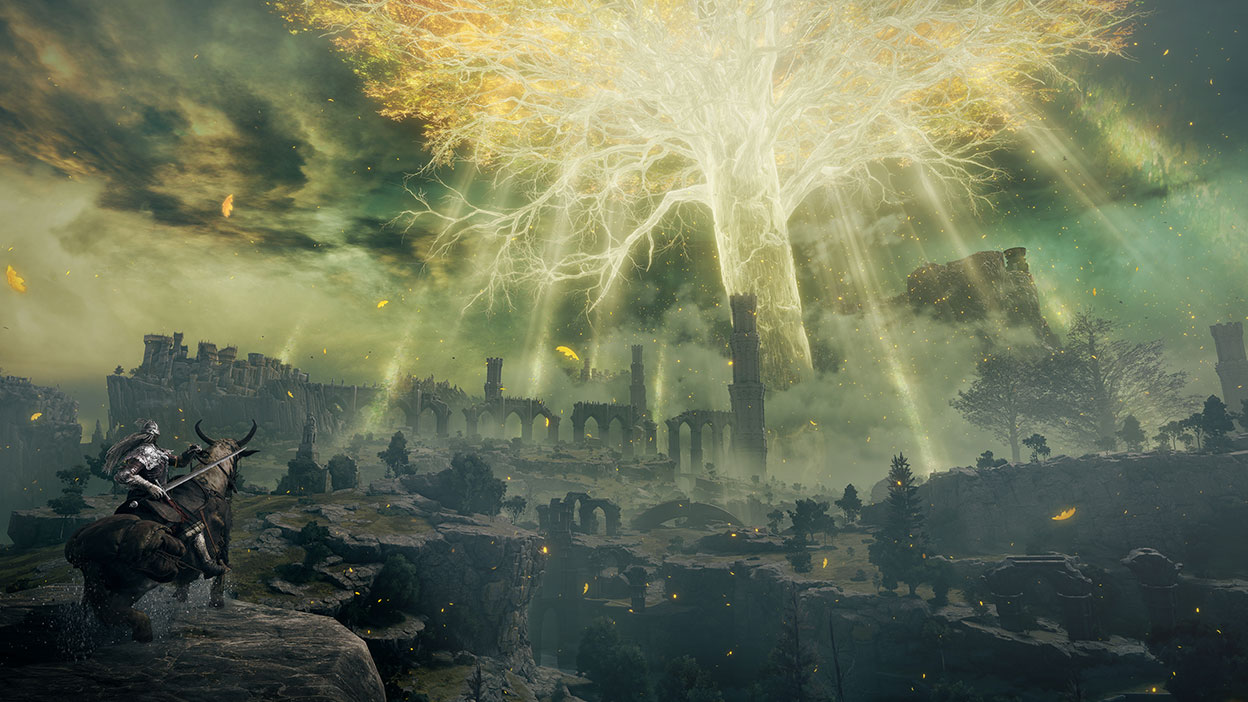Elden Ring system requirements and Elden Ring best settings guides are here to provide you with everything you need to get the most out of your PC and begin your adventure in the Lands Between.
When the Elden Ring system requirements went live on Steam, many were concerned about how FromSoftware’s newest game would run on PC. What if the minimum advised GPU is a GTX 1060. Could it be difficult to play on the highest possible settings, or even at 4K, with such a simple setup?
As a matter of fact, it is. Elden Ring may be played on a wide range of PC hardware, and even if you want to raise the frame rate, there are over a dozen graphics settings available to get those frames you want. Although, just because it runs well on a PC doesn’t mean that the game is a particularly decent PC port.
Elden Ring, like Sekiro: Shadows Die Twice and Dark Souls III before it, has a 60Hz cap, so those who invested in top graphics cards or the great gaming displays will be restricted. While Elden Ring does feel better on a controller than a mouse and keyboard, UI redesigning for the latter is still poor.

Assuming you’re not bothered by the 60fps limit, let’s look at Elden Ring best settings. This may enable you to fix performance issues if you have any. Four presets are available for use: Maximum, High, Medium and Low. But the settings can be adjusted one by one for each of the 14 individual settings. It should also be noted that there is no Ray Tracing support, but it might be added into the game in future updates.
Low settings, in our opinion, should be avoided as much as possible, given how significant the step down in quality is between Medium and Low. Lighting and shadows, in particular, do not serve how Elden Ring looks below Medium.
Elden Ring system requirements
Elden Ring’s minimum and recommended system requirements are here:
Elden Ring minimum PC specs
- OS – Windows 10
- CPU – Intel Core i5-8400 / AMD Ryzen 3 3300X
- GPU – Nvidia GeForce GTX 1060 3GB / AMD Radeon RX 580 4GB
- RAM – 12GB
- Storage – 60GB
- DirectX – DirectX 12
Elden Ring recommended PC specs
- OS – Windows 10 / 11
- CPU – Intel Core I7-8700K / AMD Ryzen 5 3600X
- GPU – Nvidia GeForce GTX 1070 / AMD Radeon RX Vega 56
- RAM – 16GB
- Storage – 60GB SSD
- DirectX – DirectX 12
Elden Ring best settings to use on PC
- Texture Quality: The impact of changing it from Maximum to Medium is extremely modest, only about 1FPS. Even so, it’s one of the most important settings to adjust.
- Antialiasing Quality: The change in FPS caused by lowering this setting from High to Low was only 1fps. So it is better to use higher-quality AA if you are playing on a 1080p display.
- SSAO: Ambient occlusion can be lowered from Maximum to Medium without causing a significant loss in visual quality, and it may improve performance slightly. Doing so could be worthwhile.
- Depth of Field: Using this effect is entirely up to you. It won’t help or hinder performance, so there’s no harm in doing so.
- Motion Blur: This setting, like the previous one, has no practical effect on performance.
- Shadow Quality: Never, under any circumstances, should this setting be reduced. Even if you use the High preset, go into the advanced settings and toggle this up to Maximum. The only cause of a tree’s flashing effect is leaf shadows flickering in and out of existence when using a lower shadow quality. Even though lowering this setting can provide some improvement, it is not really worth it.

Elden Ring best settings guide for getting the best performance out of your PC. - Lighting Quality: There is no benefit to be gained by lowering this, so leave it at its maximum setting.
- Effects Quality: Again, there will be no performance gain if you turn this setting down. Also, there isn’t much of a difference between High and Medium quality effects.
- Volumetric Quality: Another setting to leave alone. The game’s fantasy atmosphere is enhanced by volumetric effects, and dropping them doesn’t improve the frame rate.
- Reflection Quality: This is yet another setting that seems to have little influence on performance.
- Water Surface Quality: The odd frame may benefit from lowering this option, but not by much. Turn it up to High.
- Shader Quality: One of the more viable settings to lower, Medium shaders improve performance without significantly reducing fidelity when compared to the Maximum.
- Global Illumination Quality: It doesn’t improve the FPS at all when you lower it from Maximum to Medium. So there is no need to tweak it.
- Grass Quality: The difference in image quality between Maximum and Medium is greater in more grassy areas, but it will also provide a significant performance increase.
With that in mind, here are the Elden Ring best settings on PC:
- Texture Quality – Medium
- SSAO – Medium
- Shadow Quality – Maximum
- Shader Quality – Medium
- Grass Quality – Medium
- Everything else on High or Maximum
All Elden Ring scores and reviews
We hope that this guide for Elden Ring best settings was useful and you get the most out of your PC while playing Elden Ring.





